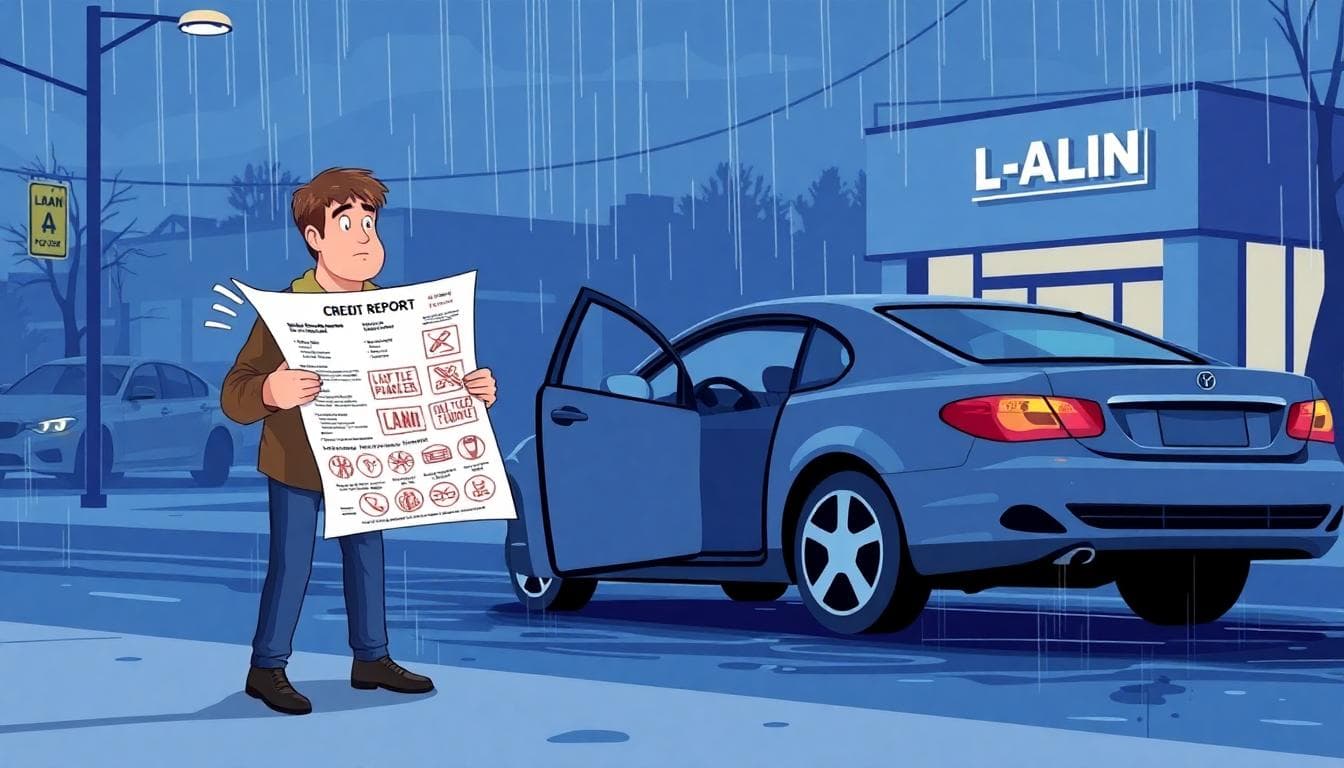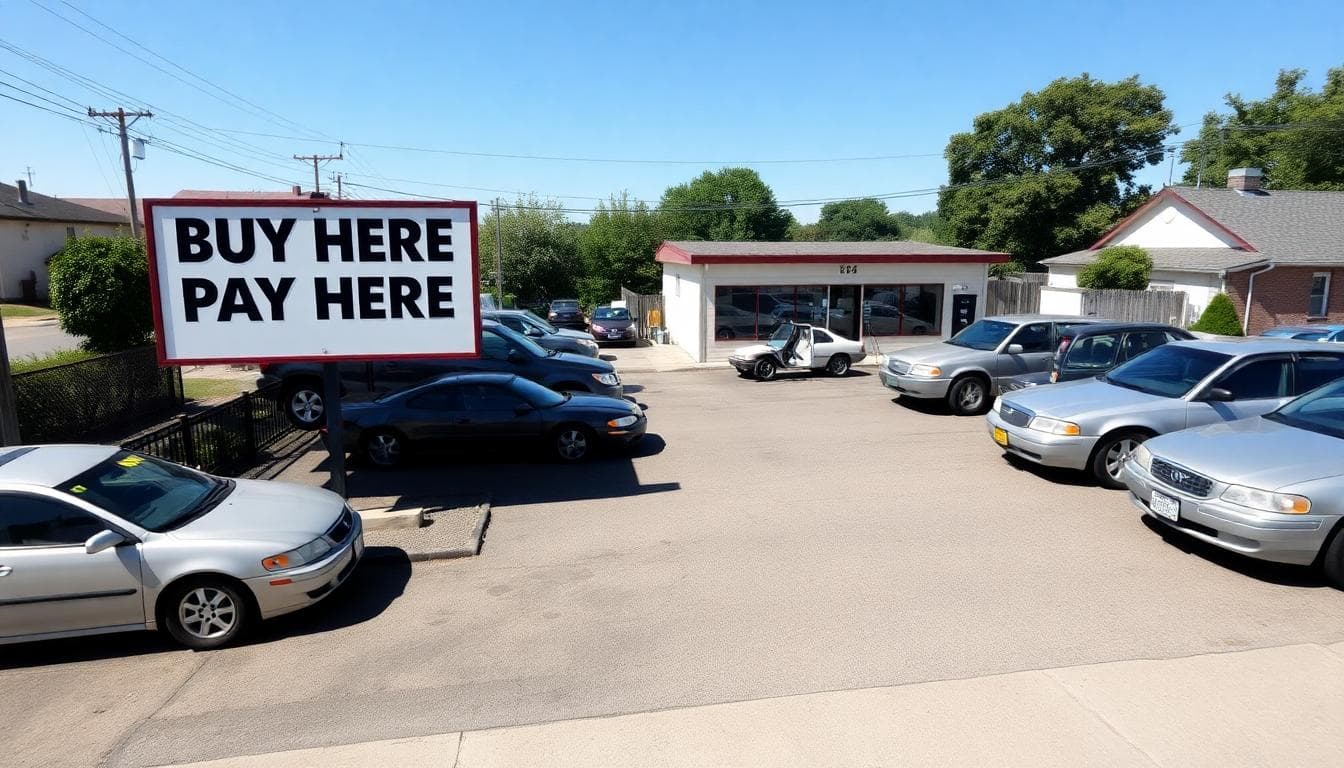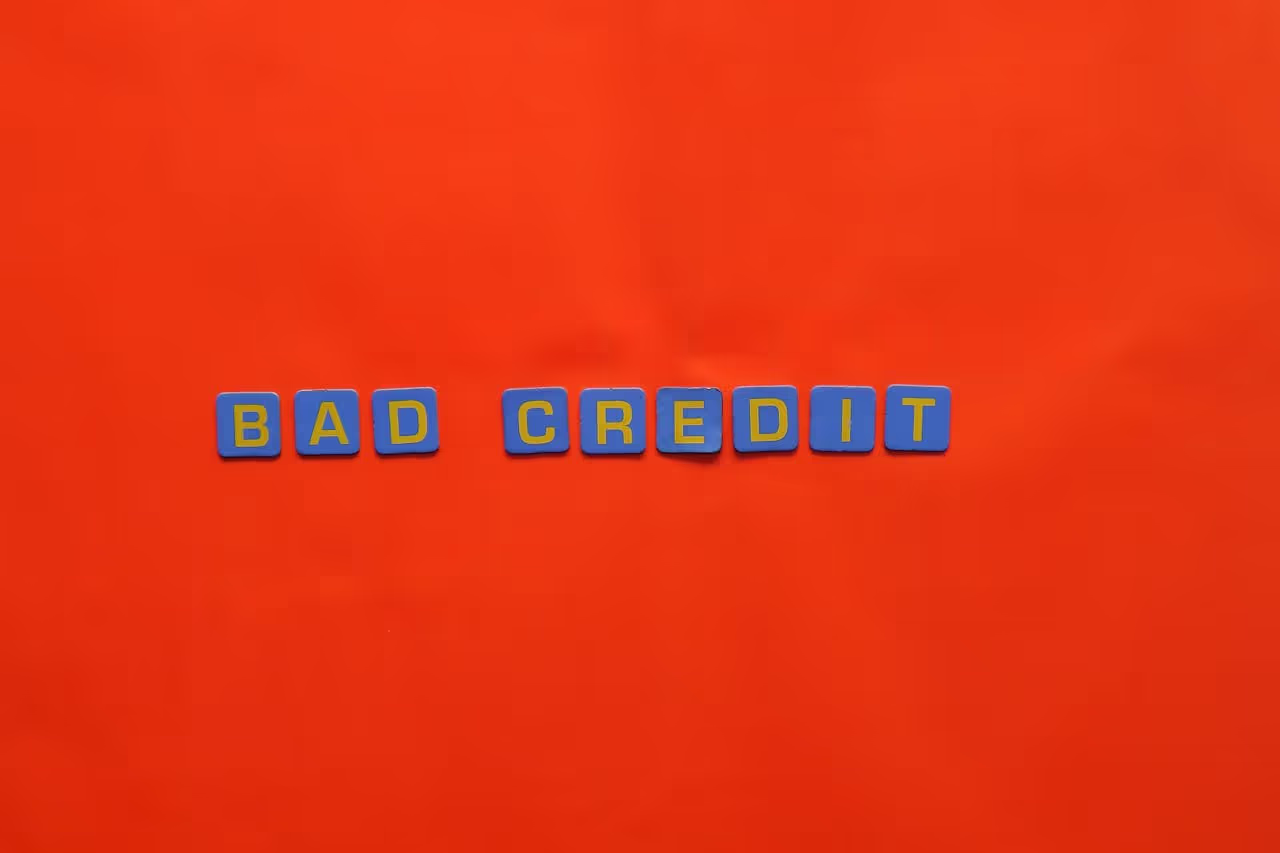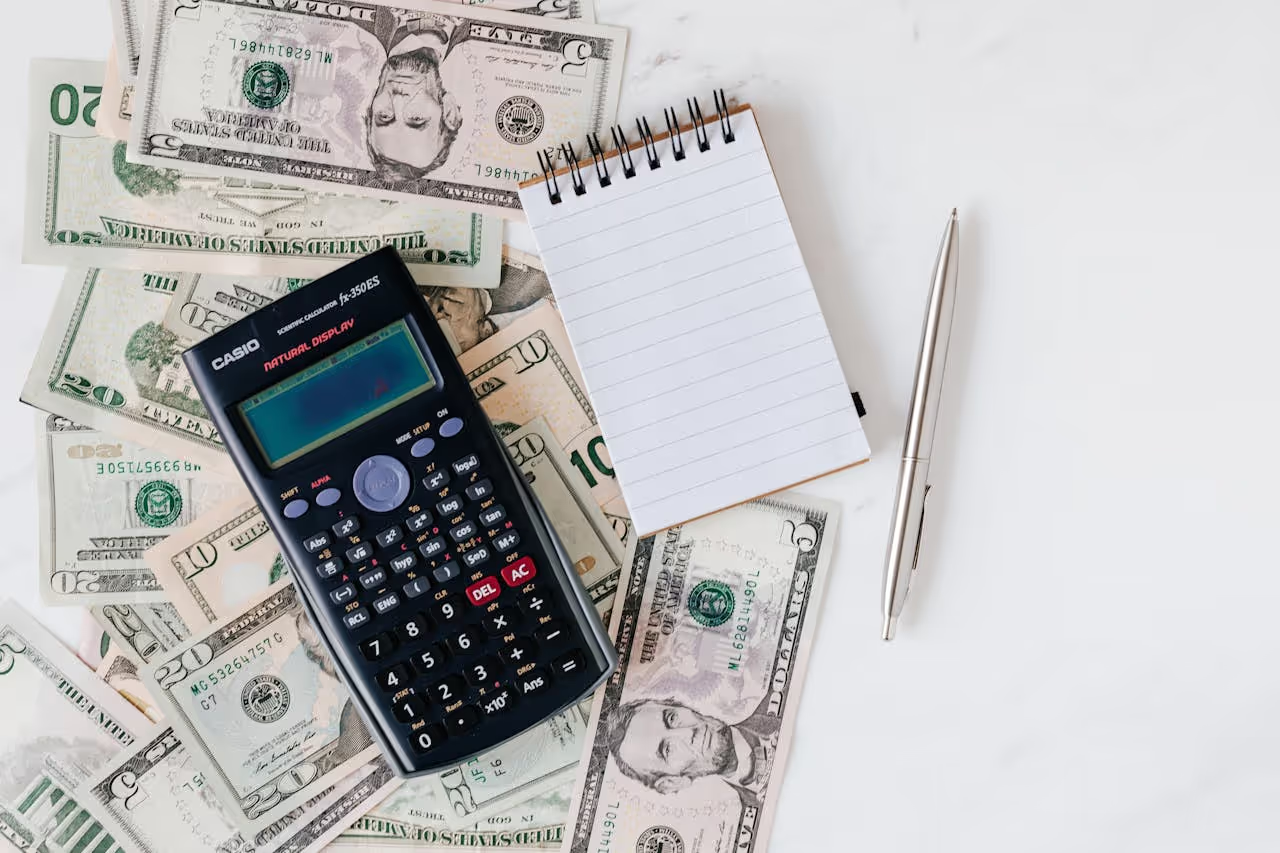Car Loans for Bad Credit, Subprime Auto Loans (not guaranteed)
Maya’s car quit on a rainy Monday, and her score had dipped after a rough year. The first lender said no, the second wanted a huge rate. She still got a car, and she used it to start rebuilding. That’s the heart of bad credit car financing, progress with a plan, not promises.
Bad credit makes approval harder and costlier. You’ll see higher rates and tighter terms, and nothing is guaranteed. But smart moves, steady income, and a simple plan can open solid paths to car loans for bad credit and subprime auto loans.
What qualifies as “bad credit”
Scores below 600, especially below 580. Recent late payments, high balances, thin credit, or a past bankruptcy can also put you here.
Subprime lender options
Banks and credit unions, online marketplaces, franchise dealers, and special finance dealers. Buy here pay here is a fallback, not a first choice.
Credit score requirements by lender
600 to 660: near-prime, wider options.
580 to 599: subprime, stricter terms.
500 to 579: deep subprime, limited choices.
Below 500: rare approvals, higher costs if approved.
Interest rate expectations (realistic numbers)
Expect rates well above prime. Many subprime offers land around the mid teens to low 20s APR, and some go higher based on score, term, and vehicle.
Down payment strategies
Plan 10 to 20 percent. Use a trade-in, tax refund, or save three paychecks to cut the loan amount.
Buy here pay here pros/cons
Pros: easier approval, flexible income proof, fast.
Cons: very high rates, small car choices, weekly payments, little reporting to credit bureaus.
Credit improvement timeline
3 to 6 months of on-time payments can help. Bigger gains often show up after 12 months.
Co-signer vs. co-buyer
Co-signer guarantees the loan but isn’t on the title. Co-buyer shares ownership and the debt. Both are fully responsible for missed payments.
Refinancing after credit improvement
After 6 to 12 on-time payments and lower balances, shop to refinance. A better rate and shorter term can drop total interest.
Bad Credit Car Loan Approval Checklist
Proof of income, last 30 to 60 days
Proof of residence and a valid ID
Reasonable budget, payment under 10 to 15 percent of take-home pay
Down payment plan, at least 10 percent if you can
Short term, 36 to 60 months, avoid long terms
Prequalification from two or three lenders
Consider a co-signer only if both parties accept the risk
Pick a reliable car, skip extras, confirm total cost before signing
This guide will help you weigh costs, avoid traps, and move from subprime to stronger credit.
What Counts as Bad Credit for Car Loans
 Image created with AI
Image created with AI
Bad credit for auto lending usually means scores below 600, with the tightest terms under 580. Lenders also look at recent negatives. Late payments in the last 12 months, high credit card balances, collections, and past bankruptcies can place you in subprime. With bad credit car financing, approvals are not guaranteed. You can still get car loans for bad credit through subprime auto loans, but rates and terms reflect risk.
Common Causes of Bad Credit Scores
The same credit factors that shape your score also shape your approval odds. These issues raise rates, shrink lender options, and can require a larger down payment.
Missed or late payments: Payment history is the top factor. A 30-day late can drop a score fast, and recent lates weigh more than older ones. Example: two missed card payments in the last six months can push a 620 into the high 500s, which moves you deeper into subprime. Learn how payment history drives scores in this guide from Experian, What Affects Your Credit Scores?
High credit utilization: Running balances near the limit signals stress. Keeping cards above 80 percent utilization can slash points even with on-time payments. Example: a $1,800 balance on a $2,000 limit sends a risk flag. For auto loans, high utilization often pushes the rate higher and can cap the amount you qualify for.
Collections and charge-offs: Unpaid debts that move to collections or are charged off hurt scoring and manual reviews. Even small medical or phone collections can trigger a higher APR. Some subprime lenders may require the account to be settled before funding.
Bankruptcy or repossession: These events limit options and raise the rate floor for several years. A recent Chapter 7 or a repossession can push approvals into deep subprime programs with strict vehicle and term limits.
Too many hard inquiries: Several new applications in a short window can dip scores and suggest risk. For auto shopping, rate-shopping inquiries within a short period often count as one, but spacing them out can hurt. Keep your prequalification window tight.
Thin or new credit file: Limited history raises uncertainty. With a short file, lenders rely more on income, down payment, and stability. You may still qualify, but expect a smaller amount and a shorter term.
Data errors on your report: Wrong balances, duplicate collections, or mixed files can drag your score. Disputing errors is a fast win. Start with the credit bureaus, then follow up with the lender reporting the mistake. This overview of common causes from Chase, Common Causes of Bad Credit, breaks down how late payments, high utilization, and public records weigh on your profile.
Quick fixes to improve approval odds:
Dispute clear errors: Remove wrong late marks or balances. Results can post within 30 days.
Pay down revolving balances: Target cards above 50 percent utilization first. Even a small paydown can move a tier.
Bring past-due accounts current: A recent 30-day late hurts more than an old one. Catch up before you apply.
Limit new applications: Keep your auto rate shopping within a tight 14 to 30 day window.
Prep a down payment: Even 10 percent helps offset risk and can improve terms with subprime auto loans.
Your score is not the only factor, but it sets the lane. Clean up what you can before you apply. Then match your profile to the right lenders in bad credit car financing where approvals are possible, not guaranteed.
Best Subprime Auto Loan Lenders for Bad Credit in 2025
 Image created with AI
Image created with AI
Bad credit car financing in 2025 is stricter than last year, but strong profiles still get approvals. The big difference is how lenders weigh risk. Score bands matter, yet monthly income, steady work, and a clean recent auto history often decide the outcome. If you are shopping car loans for bad credit or subprime auto loans, expect careful reviews and no guaranteed approvals.
Roundups from trusted sources list well known options for bad or thin credit. Marketplaces and lenders like myAutoLoan, Capital One, and Auto Credit Express show up often in current picks, along with dealer special finance programs and credit unions that consider lower scores with solid compensating factors. See current comparisons from CNBC Select on bad credit auto loans and Bankrate’s bad credit auto loan guide.
Credit Score Requirements by Lender
Lenders publish ranges, not hard guarantees. The 2025 pattern below reflects lender roundups, aggregator criteria, and dealer program standards. Score alone does not decide approval; income, job time, and debt load carry real weight.
Table: Typical 2025 starting points and what lenders review beyond scores
Capital One: Many approvals near 500 with strong income and stable job time. Expect tighter vehicle and term limits if you are below 580. Reported by 2025 lender roundups and borrower outcomes.
myAutoLoan marketplace: Often works from the mid 500s and up, matching borrowers to partner lenders. A larger down payment can improve offers.
Auto Credit Express dealer network: Can consider applicants in the low 500s and even the 400s through special finance dealers. Requires income proof and may cap vehicle age and miles.
Credit unions: Many start near 580 to 600 for standard programs, with some exceptions for members with strong cash flow and down payment.
Franchise dealer special finance: Can review applicants from 500 down to the 400s, based on recent payment history and job stability.
Buy Here Pay Here: Can look at scores down to 300 with extra conditions, like higher down payment, weekly or biweekly payments, GPS devices, and limited car choices.
What lenders weigh beyond your score
Income: Target at least 1,500 to 2,000 dollars in monthly take home pay. Higher income supports higher payments.
Job stability: Six months on the job is a common threshold. Two years in the same field helps even more.
Debt-to-income: Many lenders want total debt payments under 45 to 50 percent of income.
Down payment: Ten to twenty percent reduces lender risk and widens approvals. Trade equity helps.
Auto history: No recent repossessions in the last 6 to 12 months. Any past auto loan paid as agreed helps.
Budget fit: Payment under 10 to 15 percent of take home pay. Shorter terms reduce total interest.
2025 update, what changed
Tighter underwriting: More lenders want stronger income and cleaner recent payment history. That includes fewer late pays in the last 12 months.
Higher rate spread: Deep subprime sees mid teens to low 20s APR, and can go higher for riskier files. See current tiers and borrower tips from Credit Karma’s 2025 guide to car loans for bad credit.
Vehicle rules: More programs cap age and mileage, and some require a warranty or service contract.
Proof and paperwork: Expect full verification of pay, residence, and references, especially if your score sits below 540.
Quick tips to improve your tier before you apply
Pay down credit cards under 50 percent utilization to gain points fast.
Bring any past due accounts current and avoid new late payments for 60 days.
Save a down payment equal to tax, title, and 10 percent of the price.
Keep your application window short to avoid scattered inquiries.
If you sit near 500, concentrate on a stable job, clean recent payments, and a real down payment. If you are in the 300 to 499 range, plan for extra conditions and higher costs. In every case, approvals are not guaranteed, and you should compare at least two offers before you sign. This approach protects your budget while you rebuild credit through on-time payments.
Realistic Interest Rates and Down Payment Tips for Bad Credit Car Financing
 Image created with AI
Image created with AI
When you apply for bad credit car financing, two levers change your total cost the most: the interest rate and the down payment. Subprime auto loans often carry double-digit APRs, and approvals are not guaranteed. A strong down payment softens the hit, lowers risk for the lender, and can even help you qualify for a better rate tier. For context on current market ranges, review current rate summaries from U.S. News’ average auto loan rates and broad auto rate trends from Bankrate’s auto loan rates page. Use those as a benchmark while you compare offers for car loans for bad credit.
How Down Payments Affect Your Loan Terms
 Photo by Саша Алалыкин
Photo by Саша Алалыкин
A larger down payment reduces how much you borrow, lowers your monthly payment, and lowers the lender’s risk. In subprime auto loans, that can also improve your rate or expand your vehicle choices.
Why down payments matter
Lower risk to the lender: More equity up front means the lender is better protected if the car’s value drops.
Smaller payment and less interest: You finance less, so interest charges drop across the term.
Better approval odds: With bad credit, cash up front can offset a thin history or recent late pays.
Wider options: You may qualify for a newer vehicle or a shorter term when you bring money to the table.
What down payment targets look like
Minimum target: 10 percent plus taxes and fees. This often meets many subprime program standards.
Stronger target: 15 to 20 percent. This can help reduce APR and total interest.
Using a trade: Positive equity from a trade stacks with cash down. Negative equity raises your loan amount and interest cost.
Example scenarios at a glance Below is a simplified example using a 60-month term and an 18 percent APR, a rate that many subprime borrowers see. Your rate will vary by lender, score, and vehicle.
Table: Impact of different down payments on a hypothetical 18,000 dollar purchase
0 percent down
- Loan amount: 18,000 dollars
- Est. monthly payment: about 457 dollars
- Est. total interest over term: about 9,420 dollars
Loan amount: 18,000 dollars
Est. monthly payment: about 457 dollars
Est. total interest over term: about 9,420 dollars
5 percent down
- Loan amount: 17,100 dollars
- Est. monthly payment: about 434 dollars
- Est. total interest over term: about 8,941 dollars
Loan amount: 17,100 dollars
Est. monthly payment: about 434 dollars
Est. total interest over term: about 8,941 dollars
10 percent down
- Loan amount: 16,200 dollars
- Est. monthly payment: about 411 dollars
- Est. total interest over term: about 8,470 dollars
Loan amount: 16,200 dollars
Est. monthly payment: about 411 dollars
Est. total interest over term: about 8,470 dollars
20 percent down
- Loan amount: 14,400 dollars
- Est. monthly payment: about 365 dollars
- Est. total interest over term: about 7,528 dollars
Loan amount: 14,400 dollars
Est. monthly payment: about 365 dollars
Est. total interest over term: about 7,528 dollars
What a larger down payment can unlock
Rate relief: A stronger file and 20 percent down can sometimes move an 21 percent offer closer to 17 to 18 percent, which can save thousands over the term.
Shorter term feasibility: Paying more upfront makes a 36 to 48-month term realistic without straining the budget.
Approval on stricter programs: Some lenders set tier minimums that get easier to meet with 15 to 20 percent down.
Practical ways to fund your down payment
Save three paychecks and add a tax refund or bonus.
Sell unused items or a second vehicle to boost cash.
Fix and sell a trade with minor repairs to convert it to positive equity.
Trim extras on the car deal, skip add-ons, and direct those dollars to the down payment.
Smart guardrails while you shop
Keep the payment under 10 to 15 percent of take-home pay.
Price a reliable, modest vehicle and avoid long terms to cut interest.
Compare at least two offers. Use prequalification when available.
Read the full contract. Confirm the APR, term, and total cost before you sign.
If you need more lender options for bad credit car financing, marketplaces and lender networks can help you compare. See a current roundup focused on low score approvals in LendingTree’s bad credit auto loan guide. Strategic cash down with careful lender shopping can improve your odds, even when approvals are not guaranteed.
Buy Here Pay Here Dealerships: Pros and Cons for Bad Credit Buyers
 Image created with AI
Image created with AI
Buy Here Pay Here (BHPH) dealers finance the car and collect payments at the lot. For many shoppers with very low scores, thin files, or a recent repossession, BHPH is the fallback when banks and credit unions pass. It can get you on the road fast, but costs often run higher than other subprime auto loans. If you are comparing bad credit car financing and car loans for bad credit, treat BHPH as an option of last resort. Approvals are not guaranteed, and terms can be strict.
How Buy Here Pay Here Works
BHPH dealers approve based on income and stability more than score. You choose from the dealer’s inventory, sign a retail installment contract with the dealership, then make payments directly to them, often weekly or biweekly. Many lots require a larger down payment, install GPS or starter interrupt devices, and limit mileage and vehicle age.
What to expect at many BHPH lots
Proof of income, residency, references, and a valid ID
Weekly or biweekly payment schedule
Limited vehicle selection, older models with higher miles
Higher APRs compared to traditional lenders
Possible GPS or starter interrupt device
Pros for Bad Credit Buyers
BHPH can fit a narrow set of needs when other doors close.
Easier approval: Income-first underwriting, even with low scores or past negatives. See this clear summary of pros and cons.
Fast process: Same-day decisions, simple documents.
Flexible proof: Some dealers accept nontraditional income proof.
Local servicing: Pay at the lot, ask questions in person.
Potential credit help: Only if the dealer reports to credit bureaus. Many do not, so confirm in writing.
Cons and Risks
Trade speed and access for higher cost and stricter rules.
Very high APRs: Often higher than other subprime auto loans.
Frequent payments: Weekly or biweekly increases missed-payment risk.
Small inventory: Fewer choices, older vehicles, less warranty coverage.
Big down payment: Cash needed up front may be steep.
Add-ons and fees: Extras can inflate total cost fast.
Limited credit reporting: Many BHPH lots do not report, which can stall credit building.
Devices on the car: GPS or starter interrupt devices are common. See a dealer view on why some buyers avoid BHPH.
Cost Snapshot: What to Expect in 2025
Typical BHPH terms vary by dealer and state. Use this as a quick reference while you compare.
| Item | Common BHPH Range |
|---|---|
| APR | Mid teens to high 20s, sometimes higher |
| Down payment | 10 to 25 percent, sometimes more |
| Payment timing | Weekly or biweekly, cash or online |
| Vehicle limits | Older models, higher miles, basic trim |
| Devices | GPS or starter interrupt often required |
| Credit reporting | Sometimes reported, often not reported |
When BHPH Makes Sense
Choose BHPH when you need a car immediately, have a very low score, and cannot get approved by subprime lenders or a credit union. Keep the term short, bring a real down payment, and pick the most reliable car on the lot.
Better alternatives to try first
Credit union membership, even with a low score
Franchise dealer special finance programs
Online marketplaces that match subprime lenders
A trusted co-signer with stable credit
Waiting 60 to 90 days to save more down payment
How to Shop a BHPH Lot the Smart Way
 Photo by Gustavo Fring
Photo by Gustavo Fring
Take these steps before you sign. The goal is a safe, affordable car and a path to refinance.
Get the total cost in writing, including APR, fees, and add-ons.
Confirm credit bureau reporting, which bureaus, and how often.
Ask if a GPS or starter device is installed, plus any fees.
Bring your own pre-purchase inspection or use a third party.
Choose the shortest term you can afford.
Keep the payment under 10 to 15 percent of take-home pay.
Avoid expensive add-ons that do not help reliability.
Credit Building and Refinance Plan
If the dealer reports to the bureaus, pay on time for at least six months. If they do not, track your payment history anyway, then refinance with a subprime lender or credit union once your profile improves. Plan for a refinance window at 6 to 12 months, after steady on-time payments and lower card balances. This approach fits with bad credit car financing best practices. It can move you out of BHPH into better car loans for bad credit over time, without any promise of guaranteed approvals.
Steps to Improve Credit and Refinance Your Auto Loan Later
 Image created with AI
Image created with AI
You can turn a high-cost loan into a stronger deal with a simple plan. Focus on quick credit wins first, pick the right loan structure for today, then prepare to refinance after steady on-time payments. This approach fits bad credit car financing and avoids risky promises of guaranteed approval. It also puts you on track to qualify for better car loans for bad credit or subprime auto loans later.
Key steps that work
Stabilize payments: Make every auto payment on time, for at least 6 to 12 months. A clean streak lifts scores and shows reliability.
Lower card balances: Pay revolving balances under 30 percent of each limit. Target the highest utilization card first for a faster score boost.
Avoid new credit: Pause new applications until you refinance. Keep your inquiry window tight when you shop.
Right-size the car: Choose a reliable, modest vehicle with a shorter term and a payment under 10 to 15 percent of take-home pay.
Bring cash to the table: A real down payment reduces risk today and sets you up for better offers later.
Track your progress: Check your reports for errors and dispute any that are clear and documented.
How to time your refinance
Build a 6 to 12 month record of on-time payments and lower utilization.
Recheck your credit. If your score improved, your rate options likely did too.
Prequalify with multiple lenders using soft checks when possible. See how to shop and compare offers in this guide on refinancing a car loan with bad credit.
Aim for a lower APR and a shorter remaining term, not just a smaller payment.
Avoid rolling negative equity or add-ons into the new loan.
Smart habits that help
Set automatic payments and calendar reminders.
Round up payments when you can, which trims principal.
Keep full coverage insurance current, since a lapse can trigger default terms.
Review basic loan tips from a credit union perspective in this practical overview of bad credit auto loans.
Bad Credit Car Loan Approval Checklist
Use this simple checklist to move from application to approval with confidence. Each step strengthens your file and protects your budget in bad credit car financing.
Check your score and reports
- Pull all three bureaus. Fix errors. Watch utilization and recent lates.
Pull all three bureaus. Fix errors. Watch utilization and recent lates.
Gather income and identity docs
- Last 30 to 60 days of pay stubs, bank statements, W-2 or 1099, government ID, proof of residence.
Last 30 to 60 days of pay stubs, bank statements, W-2 or 1099, government ID, proof of residence.
Save for a down payment
- Target 10 to 20 percent. Add trade-in equity if you have it.
Target 10 to 20 percent. Add trade-in equity if you have it.
Compare at least 3 lenders
- Include a credit union, an online marketplace, and a dealer program for car loans for bad credit. Keep the shopping window tight.
Include a credit union, an online marketplace, and a dealer program for car loans for bad credit. Keep the shopping window tight.
Review full terms, not just the payment
- Confirm APR, total interest, fees, prepayment policy, and term length. Skip add-ons that do not improve reliability.
Confirm APR, total interest, fees, prepayment policy, and term length. Skip add-ons that do not improve reliability.
Get pre-approved
- Use prequalification to see your likely rate and max amount before you visit a lot. This reduces pressure and helps you pick the right car.
Use prequalification to see your likely rate and max amount before you visit a lot. This reduces pressure and helps you pick the right car.
Add a co-signer if needed
- Only if both parties accept the risk. A strong co-signer can lower the APR and widen choices, but both are responsible for every payment.
Only if both parties accept the risk. A strong co-signer can lower the APR and widen choices, but both are responsible for every payment.
Final tip: Refinancing is not guaranteed. Your best path is steady on-time payments, lower revolving balances, and a clean file for 6 to 12 months. That combination often unlocks better subprime auto loans or lets you move out of subprime entirely.
Conclusion
Bad credit and special situations do not end your car search, they change the plan. You have options if you shop with care, compare terms, and build a file that proves stability. Use these guardrails to turn a tough moment into progress with bad credit car financing.
What qualifies as “bad credit”
Scores below 600, with the tightest tiers below 580. Recent late pays, collections, or a bankruptcy raise costs.
Subprime lender options
Credit unions, banks, online marketplaces, franchise dealer programs, and buy here pay here as a last resort.
Credit score requirements by lender
Near prime starts around 600. Subprime runs 500 to 599. Deep subprime is below 500, with strict caps.
Interest rate expectations (realistic numbers)
Many subprime used car offers land near the high teens. Deep subprime often runs around 21 percent or higher.
Down payment strategies
Bring 10 to 20 percent. Stack trade equity, tax refunds, or three paychecks to reduce risk and interest.
Buy here pay here pros/cons
Easier approval and fast decisions, but very high APRs, limited cars, frequent payments, and mixed credit reporting.
Credit improvement timeline
On-time payments for 6 to 12 months, lower card balances, and no new lates can lift tiers.
Co-signer vs. co-buyer
A co-signer backs the loan, a co-buyer shares title and debt. Both carry full responsibility for missed payments.
Refinancing after credit improvement
After steady on-time payments and lower utilization, shop to cut APR and shorten the term. Refinancing is not guaranteed.
Bad Credit Car Loan Approval Checklist
Pull all three credit reports, fix clear errors.
Set a firm budget, target 10 to 15 percent of take-home pay.
Save 10 to 20 percent down, include any positive trade equity.
Prequalify with at least two lenders, including a credit union.
Choose a reliable car and a shorter term you can afford.
Read the full contract, then set autopay on day one.
Share your experience or questions below, or speak with a trusted advisor before you sign. One well-structured loan, paid on time, can start real credit recovery with car loans for bad credit and subprime auto loans. Approvals and outcomes are never guaranteed, smart shopping is.





